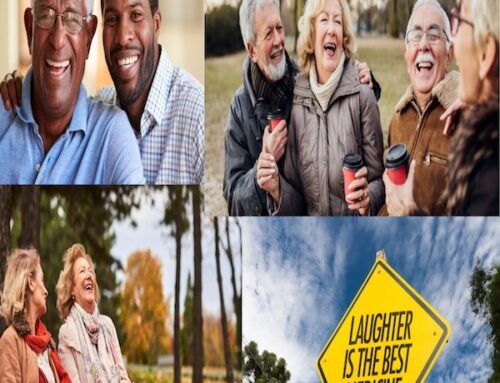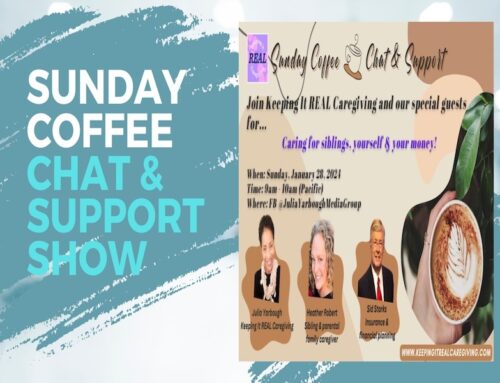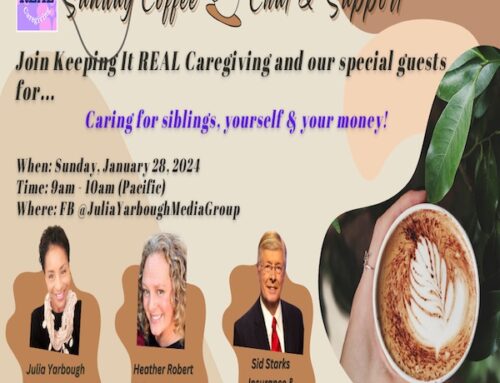EXCLUSIVE INTERVIEW: Director of The USC Family Caregiving Support Center says do these three things NOW!

Welcome to the Keeping It REAL Caregiving Bulletin Newsletter!
I’d like to start off by extending a huge THANK YOU to those of you who have been on this journey since the beginning, and to welcome those of you who are new to the KIRC family.
Like the content KIRC is delivering? Consider becoming a Supporting Sponsor. In order to continue growing, KIRC values reader support and your purchase of a subscription will support the ability to provide more journalistic stories focused in the field of aging. We invite you to join others in supporting our continuing efforts.

Let’s dive into today’s update and an exclusive interview.
I recently had the chance to talk with a dynamic leader who has been working within the field of aging for 27-years.
Dr. Donna Benton is the Director of The USC Family Caregiving Support Center/Los Angeles Caregiver Resource Center.
She is passionate about helping others and is involved in several state-wide initiatives to enhance the delivery of family caregiving services, information and drive legislation.
I talked with Dr. Benton about her work, the importance of planning ahead for the reality of caregiving especially for women of color, and her outlook for the future with an increasingly older society.

For those who are new to the arena of aging and caregiving, what is a Caregiver Resource Center?
**A Caregiver Resource Center is a one stop place where caregivers can call to learn how to navigate all of the different systems you may need to work within your caring capacity.
It is there to provide support for you as a family caregiver so you can get information, education, training, respite and legal assistance.
We have support groups and you get one-on-one individualized information either by phone, online and also in-person.
KIRC recently took part in a California Department of Aging Equity in Aging Advisory Committee meeting, in which Dr. Benton was a presenter.

She talked about some of the successes her program has experienced by actively reaching out to the local community.
You used the term ‘planting a seed’ with people by getting information out. How important is it that we get people thinking about the realities of caregiving?
It is very critical because if you look at the statistics, one out of every four families will likely be involved in caring at some point in their life.

Courtesy: AARP
Planning ahead is important for everyone…
…but for women of color, especially African American women, are there additional steps we need to take based on financial considerations, family support, marriage, existing health inequities? Why is it so crucial that we plan ahead?

Screenshot: Courtesy Alzheimer’s Association
We have a higher risk factor for dementia in our population which means we are more likely to be caring for someone who has some kind of dementia, possibly Alzheimer’s or stroke-related dementia. So because of that health inequity we’re more likely to have caregiving that is high-intensity and longer.
Also if you think about the inequities in society, we are less likely to have resources that are needed. Consider:
Out of pocket costs
We may not have local adult day care in our area
The education programs may be more challenging to get to
Some of the support systems that might be there for other populations may not be directly in our community
The good thing is that most of the information and education programs many times are online.
It’s also more difficult and challenging for us as caregivers because we are usually working in jobs that may not be as flexible for being able to take time off.
And we’re more likely to leave the job market when we become caregivers, which then impacts us our entire life span. It’s harder to get back into the job market, you don’t have as much savings and so this impacts us individually and our whole family.
Based on your years of experience in the aging field, what are the top three steps someone should take now?
1. First, because we know we are eventually going to be caregiving (statistically the numbers point this out), pay attention to your personal brain health issues, so that you can reduce your risk for Alzheimer’s disease.
2. Set up long term care plans and begin those discussions. For instance, AARP has a program called Preparing to Care. That helps you think ahead for how you need to set up caring from a legal perspective, where you live, what kinds of networks and resources there are in your community.
3. Let people know you are caregiving, or likely to be a caregiver. And talk to others. Because if we don’t begin to share, we won’t learn about resources that could help us now and in the future. Know that there are resources out there.
On a personal note, why do you do this work?
Because anytime I’m able to help a family be that much stronger… for instance, the resiliency that we have in the Black community sometimes means we are strong and won’t ask for help.
Many times I can take that strength we have and make it not brittle but make it flexible so that we can adapt better. That’s taking the strength and enhancing it.
Are you hopeful in terms of the future within the aging space, especially for California’s aging population and what that means for all of us?
I am so hopeful because of the Master Plan for Aging (MPA). One of my favorite t-shirts says, ‘Aging is everyone’s business.’
California has decided that yes, it is. The MPA is a lifespan approach for older adults and all of us as we age.
We need to start at every age and every part of our lives to understand the aging process and how that impacts us in the long run. I’m very hopeful that California is on the right track.
Keeping It REAL Caregiving thanks Dr. Benton for her time, dedication and expertise in the field of aging.
Until next time~
Julia
**In California, find your local Caregiver Resource Center here
*Header Image Courteys: Getty Images/SDI Productions





Like our content? We invite you to leave a comment and say hello!